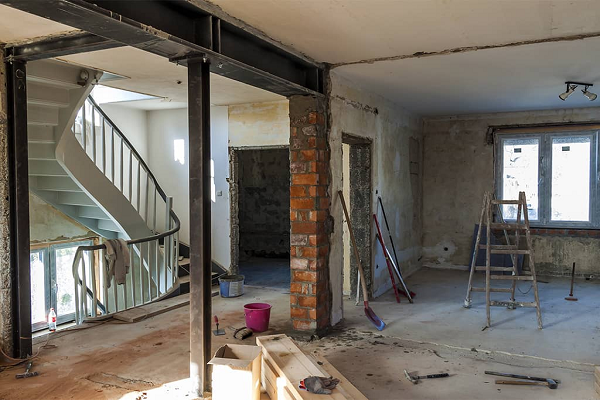How Does an Equity Release Work?
As we navigate the financial intricacies of life, certain tools emerge that offer unique solutions to specific challenges. One such tool is equity release—an option that allows individuals to unlock the value tied up in their homes. In this blog post, we’ll explore the mechanics of how equity release works, shedding light on the process, benefits, and considerations for those considering this financial avenue.
Understanding Equity Release
Defining equity release
Equity release is a financial arrangement that permits homeowners, typically those aged 55 and up, to access the equity built up in their homes without having to sell the property. It is a mechanism that allows individuals to convert a portion of the value of their home into cash, providing them with funds for a variety of purposes.
Equity release types
Lifetime mortgages and home reversion plans are the two primary kinds of equity release.
- Lifetime mortgages: The most popular type of equity release. It entails obtaining a mortgage secured by the home, with interest accruing on the loan. The outstanding balance is usually repaid when the homeowner dies or enters long-term care.
- Home reversion strategies: Individuals sell a percentage of their property to a home reversion provider in exchange for a lump sum or regular payments under this arrangement. The homeowner retains the right to live on the property until death or placement in care.
Eligibility criteria
To be eligible for equity release, individuals must typically be homeowners aged 55 or older. The amount that can be released depends on factors such as the individual’s age, health, and the value of the property.
Loan repayment
With a lifetime mortgage, the loan is repaid, along with accumulated interest, when the homeowner dies or moves into long-term care. Some lifetime mortgages allow for interest payments during the term to prevent compounding.
Home reversion plans involve the sale of a portion of the property, and the provider receives a share of the property’s final value upon sale.
Safeguards and protections
Equity release products are regulated by the Financial Conduct Authority (FCA) in the UK. This regulatory oversight ensures that individuals are provided with clear information and that certain safeguards are in place to protect their interests.
Impact on inheritance
It’s important to note that equity release can impact the inheritance that individuals can leave to their heirs. This is a key consideration for those contemplating this financial option.
Professional advice
Seeking professional financial advice is crucial before considering an equity release. Independent financial advisors can assess individual circumstances, explain the potential risks and benefits, and help individuals make informed decisions.
Equity release, when used thoughtfully, can be a valuable tool for individuals looking to access the wealth tied up in their homes. As with any financial decision, careful consideration, expert advice, and a clear understanding of the terms and implications are essential. By unlocking the value in their homes, individuals can potentially enjoy a more comfortable retirement or address specific financial needs, paving the way for a financially secure future.
Are Secured Loans Hard to Get?
When it comes to accessing financing options, the question often arises: “Are secured loans hard to get?” Secured loans, backed by collateral, have long been regarded as a reliable financial tool for individuals and businesses alike. In this blog post, we’ll delve into the dynamics of secured loans, dispel myths, and shed light on the factors that determine their accessibility.
Understanding Secured Loans:
Collateral as a key factor
Secured loans require collateral, which can be in the form of real estate, vehicles, or other valuable assets. This collateral serves as security for the lender, reducing the risk associated with the loan.
Contrary to the belief that securing collateral makes the process harder, it can actually enhance the likelihood of loan approval by providing a tangible asset that mitigates the lender’s risk.
Credit history matters
While collateral plays a significant role, credit history is still a key consideration for lenders. A positive credit history can strengthen your loan application, making it more likely for lenders to offer favourable terms.
However, secured loans can be more accessible for individuals with less-than-perfect credit compared to unsecured loans, as the collateral provides a level of assurance for the lender.
Loan-to-value (LTV) ratio
Lenders often assess the loan-to-value ratio, which compares the loan amount to the appraised value of the collateral. A lower LTV ratio can increase the chances of loan approval.
Understanding the acceptable LTV ratio for a given loan can help borrowers align their expectations and choose collateral that maximises their borrowing capacity.
Purpose of the loan
The purpose of the loan can influence its accessibility. Lenders may be more willing to approve secured loans for specific purposes, such as home renovations or business investments, where the intended use aligns with the nature of the collateral.
Shop around for lenders.
Different lenders have varying criteria and policies regarding secured loans. Shopping around and exploring options from banks, credit unions, and online lenders can help you find the most favourable terms based on your financial profile and collateral.
Professional guidance
Seeking advice from financial experts or loan advisors can provide valuable insights into the requirements and expectations of secured loans. They can help you navigate the application process and choose the most suitable collateral for your needs.
In conclusion
In conclusion, the accessibility of secured loans is influenced by various factors, and the perception that they are inherently hard to obtain may not hold true for everyone. With collateral providing a level of security and risk mitigation, secured loans can be a viable and accessible option for individuals and businesses looking to secure financing.
As with any financial decision, it’s crucial to conduct thorough research, assess your financial situation, and explore options that align with your goals. By understanding the dynamics of secured loans, borrowers can make informed choices that pave the way for financial success and stability.
Cash Buyers Catching the Eye of Home Sellers
Exactly what the next few years have in store for house prices remains to be seen. But what seems like a foregone conclusion in the eyes of most market watchers is a fairly significant fall in average house prices.
Savills recently predicted a 10% drop in 2023, while Knight Frank has forecast a 10% fall over the next two years. Elsewhere, Credit Suisse and Capital Economics have both projected a fall of between 10% and 15% within the next 12 months.
The consensus, therefore, appears to point to a fairly turbulent year to come for home sellers, at least for those looking to get the best possible prices for their properties. Average house prices are unlikely to get any higher than they are right now, seemingly making now the time to sell before any further declines creep into the mix.
Not only is this exactly what many are doing, but it is becoming commonplace for home sellers to set their sights primarily (if not exclusively) on cash buyers.
Chain-free sales
To hang around and wait for a potential 10% drop in property prices could prove catastrophic for anyone pursuing maximum capital gains. As a result, more home sellers than ever before are demonstrating enthusiasm (if not desperation) where selling their properties quickly is concerned.
A growing contingency of UK sellers is accepting inquiries and offers only from chain-free buyers, who can purchase their homes outright for cash.
The results of a recent survey conducted by mortgage broker MPowered found that as many as two-thirds of UK home sellers are only interested in offers from chain-free buyers. In addition, almost 30% said that they would charge higher prices for their homes if they sold them to standard mortgage-reliant buyers.
What this adds up to is a property market where those who are able to purchase homes outright for cash have a major advantage over competing bidders. Not just in terms of beating them to the punch, but also in their access to exclusive deals and discounts on property prices.
Traditionally, it has been practically impossible for everyday homebuyers to access the benefits afforded exclusively to cash buyers, but as the market for bridging finance continues its expansion, more mainstream buyers than ever before are empowering themselves with cash-buyer capabilities.
Bridging finance for fast property purchases
Escaping property chains and funding fast home purchases has become the number-one use for bridging loans in the UK. With bridging finance, the funds needed to purchase a property for cash can be raised within a few working days. Bridging loans are short-term products issued over terms of 12 months or less and secured against assets of value (typically residential or commercial property).
As mortgage rates continue to head ever-skyward, average bridging loan rates remain close to historic lows. Current deals are averaging just under 0.5% per month, equating to an APR of around 5.6%. But as the vast majority of bridging loans are repaid within a few months, bridging finance can work out exponentially more cost-effectively than any comparable mortgage.
Bridging finance is therefore providing home buyers from all backgrounds with a welcome lifeline—one that enables them to compete with the market’s more established cash buyers. Rather than being denied access to a sizeable chunk of the property market (and paying over the odds), anyone who can qualify for bridging finance can access all the benefits of purchasing homes for cash.
For more information on any of the above or to discuss the potential benefits of bridging finance in more detail, call anytime for an obligation-free consultation.
Council Home Construction in London Outpaces the Rest of the Country Combined
Newly published government data suggests that more council home construction projects commenced in London in 2021 than in the rest of the country combined. A total of 5,494 projects broke ground in the capital last year, compared to 4,325 spanning the rest of England as a whole.
Combined, this adds up to the most new council housing projects commenced in any year since 1979, when 9,128 projects broke ground.
Southwark was the London Borough that topped the table in terms of new council housing starts, with 895 new projects having commenced last year.
“There’s no quick fix to London’s housing crisis, but we’re taking significant steps in the right direction by backing a new renaissance in council homebuilding,” commented Mayor of London Sadiq Khan.
“In London today, we’re not just building more council homes; we’re building better homes too. The new generation of council homes are some of the best that have ever been built: modern, sustainable, and fit for the 21st century.”
“These new homes form a key part of building a better London for everyone: one that is greener, fairer, and more prosperous for all.”
“But the headwinds from recent economic chaos, combined with the effects of the pandemic, Brexit, the soaring cost of construction materials, and rising inflation, are hitting housebuilders hard and making housing delivery increasingly challenging.”
“That’s why I am urging ministers to provide additional funding so I can continue to deliver the good-quality and genuinely affordable homes that Londoners desperately need.”
The leader of Southwark Council, Kieron Williams, also praised the efforts being made to provide more affordable housing options in London.
“With the cost of living soaring, now more than ever, we need more council homes in our city,” he said.
“I’m delighted that we were able to start another 895 in Southwark last year, thanks to support from the Mayor, alongside our own council investment.”
“Achieving the most starts in London has been far from easy given the tidal wave of challenges facing the construction industry.”
“What worries me now is that those challenges are only getting harder as the national housing crisis deepens and construction costs spiral.”
“Having such a strong partnership between the mayor and councils is making a real difference, but we urgently need the government to get serious about solving the housing crisis too.”
Living cost crisis
The construction of thousands of new council homes in London may eventually bring some relief to those who continue to find themselves priced out of the market. In the meantime, the growing exodus of younger renters leaving London to find more affordable homes elsewhere is likely to continue.
Between April and March this year, the average rental price for a one-bedroom property in London equalled just over 46% of the average Londoner’s gross median pay. By contrast, renters across the rest of the country use around 26.4% of their gross median pay for rent.
According to Foxtons Estate Agents, one of the main drivers behind skyrocketing rent prices in London is explosive demand, coupled with minimal available inventory. They said that around 23,000 rental properties were listed on the market in September, meaning that an average of 29 people were competing for each property listed.
There are approximately 9% fewer properties available on the private rental market in London than at the same time last year, while demand has increased by as much as 20%.
Consequently, as many as 20% of younger people are planning on leaving London entirely, as they simply cannot afford to keep spending so much of their money on rent costs alone.
Return to normality triggers further affordability issues
Speaking on behalf of Hamptons, head of research Aneisha Beveridge said that the return to the new normal would most likely continue pushing average London rental prices higher.
“With COVID-19 being pushed further to the back of people’s minds, life in the capital is slowly returning to its new normal. Tenants are returning to the bright lights of the city, and this is driving rental growth to record highs,” she said.
“The rise of remote working means that fewer tenants are moving to the capital specifically for work. In fact, a growing number of tenants choosing to live in London are working fully remotely and could live nearly anywhere in the country. The footloose nature of many jobs today means that it will be culture and lifestyle rather than employment that become the capital’s biggest draw.”
What Are the Alternatives to Fixed-Rate Mortgages?
Skyrocketing interest rates are making once-affordable fixed-rate mortgages increasingly less attractive. FCA figures suggest that around 75% of all UK mortgage payers take out fixed-rate deals, but this is likely to change as base rates head ever higher.
“For a long period of time, the dilemma in mortgage advice hasn’t been whether to fix a rate but for how long to fix it,” said mortgage and protection adviser at Prosperity Wealth Ltd., Tom Woodall.
“Now, we face a period where fixed rates have dramatically increased due to a variety of factors, and, as such, other types of mortgages need to be considered for clients looking either to purchase a property or remortgage.”
In which case, what are the alternatives available to fixed-rate mortgages?
Tracker and discounted mortgages
With a tracker mortgage, the rate of interest payable tracks the Bank of England base rate, only slightly higher. Meanwhile, a discounted mortgage works similarly, but the rate charged is a percentage point lower than the lender’s standard SVR.
Both of these options carry risks but can be highly advantageous due to the advantages they bring.
“Although most lenders have repriced their variable rate mortgages, clients are acknowledging that SVRs and the base rate would have to increase fairly starkly to meet the current fixed rates on the market,” commented Woodall.
“With tracker rate mortgages, generally there are no early repayment charges,” added Woodall.
“This has led to the emergence of the ‘switch to fix’ mentality across the market… utilising a tracker product with lower monthly costs and no early repayment charges while the Bank of England rate is closely monitored. As a contingency, the plan is to switch to a fixed rate if the Bank of England rate spirals and pushes monthly payments beyond budget.”
Capped mortgages
This is a similar product to a standard variable rate mortgage, though it includes a ‘cap’ beyond which the interest rate cannot go. Capped mortgages were popular 20 or so years ago but largely disappeared from the High Street as fixed-rate mortgages became increasingly affordable.
The obvious benefit of a capped mortgage is the peace of mind that comes with knowing your interest rate will never exceed a predetermined cap. Tracking down a good-capped mortgage on the High Street today can be difficult, but we may see more such products (or close approximations thereof) appearing as demand grows.
Offset mortgages
With an offset mortgage, you use your savings to offset some balance left on your mortgage, reducing the amount of interest you pay. You transfer your savings into an account linked to your mortgage, and the total value of your mortgage is technically reduced by this amount.
With an offset mortgage, you can still access your savings in the normal way, but you do not earn any interest on them. This, therefore, needs to be considered alongside potential interest savings, but a decent chunk of money used to offset a mortgage can lead to a major reduction in interest payments.
That said, even just a few thousand pounds to offset a mortgage can make a huge difference.
Green mortgages
Green mortgages are often exclusive to those who purchase energy-efficient homes or plan to make their own homes more environmentally friendly. A lower interest rate or cash-back offer is provided as an incentive, typically making a green mortgage more affordable than a conventional mortgage.
But as the costs of green homes (and conducting energy-efficient home improvements) may exceed the financial capabilities of many buyers, green mortgages are not always a viable option for mainstream borrowers.
Tenant Attempts to Sell the Home He Was Renting, Gets Two Years in Prison
In what Cambridgeshire Police have called a “truly brazen crime”, a private tenant has been jailed for attempting to sell the home he was renting in order to make off with the proceeds.
41-year-old Andrew Smith moved into the three-bedroom home in Cambridge in early 2020, only to list the property on the market just two weeks later. The listing was published via a non-existent online estate agent in the hope of tricking a desperate buyer into a quick sale.
And he almost succeeded, with one interested party coming dangerously close to handing over £400,000 for the property he didn’t even own. The price was agreed, and the sale was on its way to being finalised when an inspection by the buyer (accompanied by a drain surveyor) prompted suspicion.
After speaking to neighbours who said they were almost certain the house was being rented to its current occupant, he called the police. The subsequent investigation found that M upon. Smith had even rented furniture to stage the property for viewing by prospective buyers in order to sell it faster and for a higher price.
He was detained in Bedford and accused of engaging in money laundering and fraud by false representation. Having helped turn a quick profit at the expense of an unsuspecting buyer, Mr Smith was sentenced at Brighton Magistrates’ Court to two years and six months in prison.
“This is an almost unbelievable and truly brazen crime, which saw an innocent buyer almost part with more than £400,000 for a property that was never for sale in the first place,” said Detective Constable Dan Harper.
“The investigation has been long and detailed, and we have worked tirelessly to make sure justice has been served.”
A stark warning
Despite having been labelled an “almost unbelievable” crime, the prevalence of these types of incidents has been growing across the UK for some time. In particular, rapidly rising levels of “title fraud” are prompting homeowners in record numbers to register for property alerts with the Land Registry.
Incredibly, research suggests that as many as 97% of homeowners face the threat of their properties being sold illegally, without their consent or their knowledge.
From 2020 to 2021, the Land Registry recorded a 300% increase in the number of people registering for property alerts. According to new information released by Third fort based on a Freedom of Information Act request, more homeowners than ever before appear to be taking title fraud seriously.
But even now, a mere 515,000 property owners have so far registered for the service, which is provided 100% free of charge in England and Wales. This equates to just 2.5% of all property owners, suggesting that almost 98% face the very real risk of falling victim to title fraud.
As explained on Gov.co.uk:
“We will send you an email alert each time there is significant activity on the property you are monitoring, such as if a new mortgage is taken out against it.”
“The alert will tell you the type of activity (such as an application to change the register or a notification that an application may be due), who the applicant is, and the date and time it has been received.”
“Not all alert emails will mean fraudulent activity. If you don’t think the alert email is about any suspicious activity, you don’t need to do anything.”
“Signing up for Property Alert won’t automatically stop fraud from happening. You will need to decide if the activity on the property is potentially fraudulent and act quickly if so. The alert email will tell you who to contact.”
Mortgage Rate Rises Will Be Lower Than Previously Predicted in 2023
Homeowners have been thrown at least a modicum of moderately positive news this week, as forecasts now predict that interest rates will peak slightly lower than previously expected. Data from Bloomberg suggests that the Bank of England base rate will hover at around 4.8% to 4.9% between March and September next year, which is significantly lower than the pick predicted at the time of Kwasi Kwarteng’s disastrous mini budget a few weeks ago.
This may come as welcome news to some homeowners, but many mortgage payers are still likely to feel the sting of significantly elevated rates. According to a separate study carried out by Morgan Stanley, around 35% of 40% of introductory mortgage deals are set to expire within the next 12 months. This will leave those exiting low introductory rates facing the prospect of interest rates up to three times higher than they are currently paying.
Adding to the economic woes of households hit by higher mortgage rates will be the withdrawal of the energy price guarantee next April. The average household energy bill is currently capped at £2,500 per year, but the initial plan to extend this scheme for two years was recently scrapped, reducing its run to just one year.
Without additional support, this will leave millions of households facing the prospect of even higher energy bills than those that have blighted much of the country throughout 2022.
A 300% leap for many mortgage payers
According to Morgan Stanley, the vast majority of households on fixed-rate introductory deals that are set to expire within the next six months will find themselves moving from a low 2% interest rate to around 6%. This will leave millions facing exponentially higher monthly mortgage bills, of which many may not be able to meet their payment requirements at all.
Speaking on behalf of Brewin Dolphin, a wealth management company, Rob Bargeman said that the appointment of Jeremy Hunt as Chancellor had at least calmed some fears among traders and market watchers.
“Essentially, spending more money and cutting taxes left international investors, who the government relies upon to fund our budget deficit, worried about the sustainability of the UK’s finances,” he said.
“As a consequence, investors demand a higher price and a greater interest rate to compensate them for the higher risk.”
65% of high-LTV mortgage products were withdrawn
Analysts now believe that interest rate rises throughout the first three quarters of 2023 will not be quite as steep as once predicted. As it stands, the current rate payable on a two-year fixed mortgage (following any introductory rate offers) is around 6.55%.
As lenders become increasingly reluctant to hand out high LTV mortgages in the current financial landscape, data from Moneyfacts suggests that around 65% of all mortgage deals with a 5% deposit requirement have been withdrawn.
This is likely to make it much more difficult for prospective homebuyers with low incomes to come up with the kinds of deposits needed to qualify for the mortgage products still available from mainstream lenders.
“First-time buyers are some of the lowest income-earners in the UK, and when house prices are up to 10 times the national average of wages in some areas, it has proven extremely difficult to obtain a mortgage,” said James Miles, of The Mortgage Quarter.
“The good news is that lenders are still lending and there are enough loans, but we are seeing mortgages being taken over a longer term to ensure payments are affordable for first-time buyers.”
“I would expect this to continue until the UK can get inflation under control, which will then have a knock-on effect of rates coming back down.”
How Much Do Property Renovations Cost (and Can You Avoid Overpaying)?
The past 12 months alone have added an average of £39,000 to the market value of a UK home. Millions of homeowners have found themselves sitting on a small fortune and understandably want to get the best possible return on their investments.
Conducting home improvements and renovations is one of the best ways to maximise a property’s value before listing it for sale. But exactly how much does it cost to renovate a home, and how can you ensure the improvements you make generate respectable profits?
How much do renovations cost?
A combination of factors over the past few years has seen the costs of property renovations skyrocket. From basic building materials to labour to the latest green technologies, prices across the board are on the rise.
The average loft conversion, for example, now costs around 25% more to undertake than it did two years ago. Alarmingly, the cost of installing a new bathroom in a residential property is also up by as much as 40%.
Renovation costs vary significantly from one property type and area of the UK to the next. According to the Homeowners Alliance, this is how much you can expect to pay to renovate and improve your home in 2022:
| PROJECT | HOUSE RENOVATION COST |
| Extension | £26,000 – £34,000 |
| Loft conversion | £45,000 |
| New bathroom | £6,000 |
| New Kitchen | £10,000+ |
| Garage conversion | £6,000 |
| Subsidence | £6,000 |
| Damp | Up to £16,000 |
| Double glazing | £400 — £600 per window |
| Installing central heating | £4,000 |
| New boiler | £2,700 |
| New roof | £4,500 – £12,000 |
| Fixing rot | £1,000 – £2,000 |
| Woodworm treatment | £450 – £800 |
Source: hoa.org.uk
On top of the above, experts advise allowing an additional 10% to compensate for unexpected issues and additional costs encountered along the way.
What are the best renovations to add value to a property?
When it comes to generating the best possible ROI with property renovations, some home improvements are known to generate bigger profits than others.
For example, a loft conversion has the potential to generate the biggest profit of all (an average 16% property price increase), followed by a double-story extension at 15%. A single-story extension will typically increase a home’s value by 11%, whereas a complete kitchen renovation can contribute 10% to a property’s resale value.
Meanwhile, adding a conservatory to your home could increase its market value by 9%; a single garage can add an average of 7% to the value of a home; and a medium-scale bathroom refit can contribute 4%. Surprisingly, simply painting and decorating the interiors of a property can boost its asking price by as much as 3%.
How to avoid overpaying
Irrespective of the type of renovations you set your sights on, it is up to you to ensure that you don’t overpay. Before entering into a contract with any builders or construction companies, ensure that they are registered with the likes of Trustmark, the National Federation of Builders, or the Federation of Master Builders.
Using Checkatrade to verify the credentials of other types of contractors is highly recommended, as is requesting recommendations and references from past customers.
Fixed quotations should always be issued in advance of the commencement of a project, and all essential terms and conditions must be agreed upon in writing. You should also be given as much time as needed to evaluate the provider’s reputation and stature, with no pressure to go ahead at any time.
Online reviews and recommendations alone can give you a good idea of whether a service provider or contractor is worth doing business with. If there is a disproportionate quantity of negative feedback or anything untoward about their track record, you could be taking a risk by putting your home in their hands.








